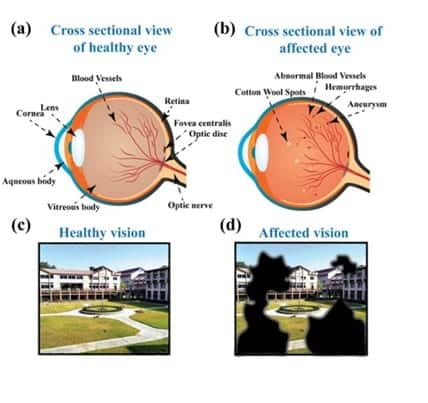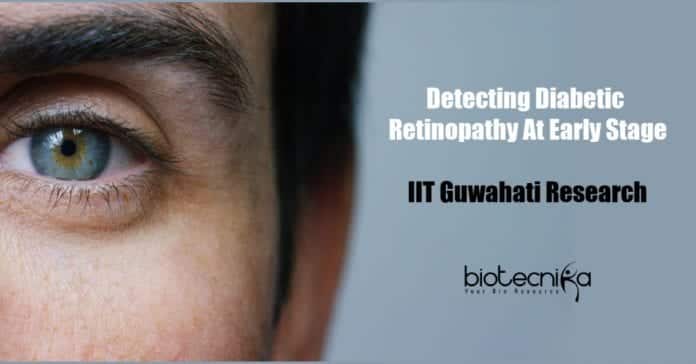Point-of-care device to detect diabetic retinopathy by IIT Guwahati
A point-of-care testing device that can detect diabetic retinopathy at an early stage is developed by the researchers at the Indian Institute of Technology (IIT) Guwahati, in collaboration with Shri Sankaradeva Nethralaya Guwahati. No invasive screening is required for this process. The researchers have submitted an Indian patent for this device as well as the concept.

The team aimed to develop a simple urine or blood test, which can detect retinopathy even before signs and symptoms are seen. This made the researchers look for molecules that are found in body liquids that can indicate ongoing or impending retinopathy – biomarkers of retinopathy. They discovered that a reliable indicator for retinopathy is a protein present in tears as well as urine – β-2-microglobulin (B2M). They laid out to develop a tool equipped with this knowledge, that can detect this protein in these body fluids.
Dr. Dipankar Bandyopadhyay, Professor, Department of Chemical Engineering and Head of Center for Nanotechnology, IIT Guwahati said, “Presently, the first step in the test for diabetic retinopathy is an invasive eye examination, in which the eyes are expanded and
the eye doctor inspects the eye”.Dr. Bandyopadhyay, who led the study said, “As individuals that have had eye tests know, this is inconvenient, with a fuzzy vision for a long period of time after the eye test. Sophisticated detection approaches such as detection of exudates in the retina, optical coherence tomography, image evaluation, and fluorescein angiography are complicated and need experienced operators and can show the condition only after it has progressed enough to be discovered”.
A detection device was developed by the study team in which the sensing element was an antibody to β-2-microglobulin that was immobilized on (a hundred thousand times smaller sized than the size of the human hair) gold bits. The scientists claim that there was a color change when the nanogold-laden antibody came in contact with β-2-microglobulin.
The lead researcher said, “The body fluids like tear or urine – was drawn into really thin capillaries or tubes”. “The gold-antibody nanoparticles came in contact with the body fluids in capillaries”. To detect β-2-microglobulin the color change was examined”. With reliable and sensitive detection of β-2-microglobulin, this prototype microfluidic analyzer gave great outcomes, offering promise for the design of easy-to-operate and hand-held detectors for diabetic retinopathy, just like the popular glucometers for diabetes.
In the layout of such detection tools, microfluidic tools called microchips and lab-on-a-chip have been generating substantial interest in recent years. A little plate containing microchannels for the guidance of fluids is normally present in the detection devices, in this case, a micro drop of tear or urine. Several microfluidic tools have already been created for the biomarker discovery in various diseases including cancer, however, for the detection of diabetic retinopathy, there are no such tools developed.
The Ministry of Human Resource and Development, the ICMR, and the Ministry of Electronics and Information Technology has funded this study. The outcomes of the study are published in ACS Sustainable Chemistry & Engineering journal.
Diabetic retinopathy is normally gotten worse when the person is on insulin for diabetic therapy. As per an estimate, by the year 2025, 11-20 million Indians will suffer from diabetic retinopathy.
Professor Bandyopadhyay and Ms. Tamanna Bhuyan, Mr. Subhradip Ghosh, Mr. Surjendu Maity (his students), of IIT Guwahati have authored the study. Dr. Dipankar Das, a Senior Consultant, Head of the Department, Ocular Pathology, and Uvea in Shri Sankaradeva Nethralaya and practicing Ophthalmologist, is the other author and collaborator of the study.
Author: Sruthi S






























